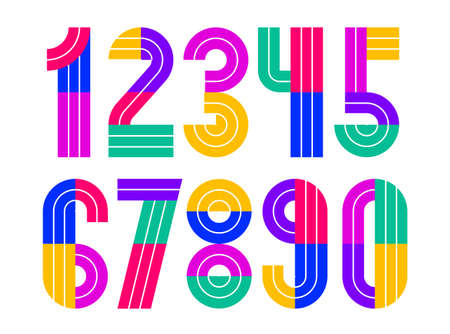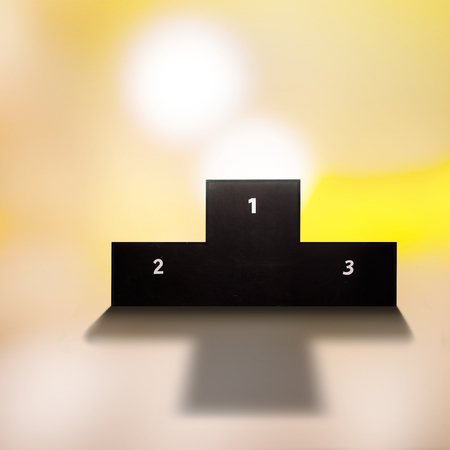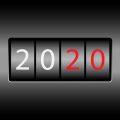1. Introduction to the I Ching and Its Historical Context
The I Ching, also known as the Book of Changes, is one of the oldest and most influential texts in Chinese culture. Its origins can be traced back over 3,000 years, making it a foundational classic in both philosophy and divination.
Origins of the I Ching
The I Ching began as a simple manual for divination, using turtle shells or yarrow stalks to provide guidance for decision-making. Over centuries, it evolved into a sophisticated system that combined symbols, philosophy, and cosmology. Ancient Chinese scholars, including Confucius, contributed commentaries that deepened its philosophical meaning.
Timeline of the I Ching’s Development
| Period | Development |
|---|---|
| Shang Dynasty (c. 1600–1046 BCE) | Early divination practices using oracle bones and shells |
| Zhou Dynasty (c. 1046–256 BCE) | Creation of the hexagram structure; integration into royal and scholarly traditions |
| Warring States & Han Dynasty (475 BCE–220 CE) | Philosophical commentaries added; Confucian influence expands its role beyond divination |
| Modern Era | I Ching studied worldwide; adapted by Western thinkers and integrated into new disciplines like psychology |
Cultural Significance in Chinese Philosophy
The I Ching is more than just a book—it’s a lens through which generations of Chinese philosophers have viewed the universe. It explores ideas about balance, change, and the interconnectedness of all things. The text’s core concepts—such as yin and yang—form the backbone of not only Chinese thought but also practices like feng shui, traditional medicine, and martial arts.
Influence on Eastern and Western Thinkers
Throughout history, the I Ching has inspired countless thinkers across cultures. In China, it shaped the philosophies of Confucianism, Daoism, and other schools of thought. In the West, famous figures like Carl Jung found inspiration in its symbolic approach to understanding human experience. The I Ching’s blend of logic and intuition appeals to those seeking insight into life’s uncertainties.
I Ching’s Cross-Cultural Impact: Examples
| Region/Person | How They Used the I Ching |
|---|---|
| China – Confucius | Added philosophical layers to its teachings; used as a guide for personal development and governance |
| Western World – Carl Jung (Swiss psychologist) | Explored I Ching’s relevance to modern psychology; used it as a tool for self-reflection and understanding unconscious processes |
| United States – Contemporary New Age Movement | I Ching adapted for personal growth workshops, counseling sessions, and creative inspiration tools |
2. What Are Hexagrams: Structure and Meaning
The I Ching, or Book of Changes, is one of the oldest Chinese classic texts. At the heart of the I Ching are 64 unique symbols called hexagrams. Understanding these hexagrams—and how they’re built—can help us see how the I Ching guides people through life’s changes and important choices.
How Hexagrams Are Built
Each hexagram is a stack of six horizontal lines. Every line can be either solid (—) or broken (– –). A solid line stands for yang, which represents active, strong, or creative energy. A broken line stands for yin, which represents receptive, flexible, or yielding energy.
Hexagram Construction Table
| Position | Line Type | Symbolic Meaning |
|---|---|---|
| Bottom (1st) | Solid or Broken | Foundation, beginnings |
| 2nd to 5th | Solid or Broken | Development stages |
| Top (6th) | Solid or Broken | Culmination, outcome |
To create a hexagram, you combine two trigrams (groups of three lines). Each trigram has its own meaning, tied to natural elements like water, fire, mountain, or thunder. When you stack one trigram on top of another, you get a hexagram that blends their meanings.
The 64 Hexagrams: Symbols of Change
The I Ching’s 64 hexagrams are like a map of life’s possible situations. Each one tells a different story about change and transformation. For example:
- Hexagram 1 (The Creative): Six solid lines; symbolizes pure creative force and new beginnings.
- Hexagram 2 (The Receptive): Six broken lines; symbolizes openness and supporting others’ ideas.
- Hexagram 51 (The Arousing): Mix of solid and broken lines; symbolizes shock or sudden change.
- Hexagram 63 (After Completion): A pattern showing things in their proper place after a big shift.
Quick Reference: Sample Hexagrams and Their Meanings
| Hexagram Number & Name | Main Symbolism | Key Message for Decision-Making |
|---|---|---|
| 1 – The Creative (☰) | Pure yang energy; initiative, leadership | Create something new with confidence |
| 2 – The Receptive (☷) | Pure yin energy; support, openness | Be open and adaptable to others’ ideas |
| 29 – The Abysmal (☵ over ☵) | Difficulties; navigating danger or uncertainty | Caution and perseverance are needed now |
| 56 – The Wanderer (☲ over ☶) | Migrating; adapting in unfamiliar territory | Stay alert and flexible in new situations |
The Role of Hexagrams in Everyday Life Decisions
The real power of hexagrams comes from using them as tools for reflection during moments of change—like picking a career path, making relationship choices, or handling tough situations. By looking at the structure and meaning of a drawn hexagram, you can find guidance that fits your unique circumstances.
In Short:
The 64 hexagrams of the I Ching aren’t just ancient symbols—they offer practical insights into the patterns of change we all experience. Understanding their structure helps make sense of lifes ups and downs in a way thats both timeless and relevant today.

3. Understanding Trigrams: The Building Blocks
If you’ve ever explored the I Ching, you might have heard about trigrams. But what exactly are they? In simple terms, trigrams are sets of three lines, each line either solid (representing yang) or broken (representing yin). These eight basic symbols are the foundation of the I Ching’s structure and meaning.
What Are the Eight Trigrams?
The eight trigrams are called “Ba Gua” in Chinese, and each one has its own unique symbolism, element, and meaning. Think of them like the DNA of the I Ching—every hexagram is made from two of these trigrams stacked together. Here’s a quick look at each one:
| Trigram Name | Symbol | Element | Meaning/Symbolism |
|---|---|---|---|
| Qian (Heaven) | ☰ | Sky/Heaven | Creativity, strength, leadership |
| Kun (Earth) | ☷ | Earth | Receptivity, nurturing, support |
| Zhen (Thunder) | ☳ | Thunder | Movement, initiative, arousal |
| Xun (Wind/Wood) | ☴ | Wind/Wood | Gentleness, flexibility, growth |
| Kan (Water) | ☵ | Water | Danger, depth, mystery |
| Li (Fire) | ☲ | Fire | Brightness, clarity, transformation |
| Gen (Mountain) | ☶ | Mountain | Stillness, stability, boundaries |
| Dui (Lake) | ☱ | Lake/Marsh | Joyfulness, openness, communication |
The Meaning Behind Each Trigram
The lines that make up each trigram aren’t random—they carry deep symbolic meaning. A solid line stands for yang energy: active, creative, assertive. A broken line means yin energy: receptive, nurturing, adaptable. The combination of these lines gives each trigram its personality and power.
The Elements and Their Roles in Everyday Life
The elements linked to each trigram—like water, fire, earth—aren’t just old-school philosophy. They connect to real-life experiences and emotions. For example:
- If you’re facing a challenge: The thunder trigram suggests taking action.
- If you need peace: The mountain trigram encourages stillness and reflection.
How Trigrams Combine into Hexagrams
The magic really happens when two trigrams come together to form a hexagram. Picture it like stacking building blocks: one trigram on top of another makes six lines in total. Every possible combination creates a different hexagram with its own message for your situation.
An Example Combination
If you stack Heaven over Earth (Qian over Kun) you get Hexagram 11—symbolizing harmony and balance between creative force and receptive support. It’s all about how energies mix to reflect life’s many situations.
A Quick Look at Trigram Pairings
| Upper Trigram | Lower Trigram | Description |
|---|---|---|
| Heaven | Earth | Total harmony and new beginnings |
| Lake | Fire | Cultivating joy through passion |
This pattern repeats across all 64 hexagrams—each one telling a story based on its building blocks. That’s how the I Ching offers wisdom tailored to whatever you’re experiencing in life.
4. Symbolic Interpretations and Everyday Applications
The I Ching’s structure—made up of hexagrams and trigrams—might seem ancient and mysterious, but it can actually offer practical advice for daily life. Let’s explore how these symbols connect to real-world experiences, especially in a modern American context.
How Hexagrams and Trigrams Relate to Daily Life
Each trigram represents a natural element or force, such as water, fire, thunder, or wind. When combined into hexagrams, they form stories about change, challenge, or opportunity. Here’s a quick look at the main trigrams and what they symbolize:
| Trigram | Symbol | Meaning | Everyday Example |
|---|---|---|---|
| ☰ (Qian) | Heaven | Creativity, leadership | Starting a new project at work |
| ☱ (Dui) | Lake | Joy, openness | Social gatherings with friends |
| ☲ (Li) | Fire | Clarity, passion | Pursuing a personal hobby |
| ☳ (Zhen) | Thunder | Movement, initiative | Tackling sudden challenges at home |
| ☴ (Xun) | Wind/Wood | Flexibility, growth | Adapting to changes at work or school |
| ☵ (Kan) | Water | Difficulties, depth | Navigating emotional conversations with family |
| ☶ (Gen) | Mountain | Stillness, reflection | Meditation or taking quiet time alone |
| ☷ (Kun) | Earth | Nurturing, support | Caring for others or community volunteering |
The I Ching in Modern American Life: Real-World Examples
Work and Career Decisions
If you’re facing a big decision at work—like whether to take on a new role—the I Ching can encourage you to consider both creative energy (Heaven) and careful planning (Earth). For example, the hexagram that combines Heaven above Earth suggests strong leadership grounded in real-world action.
Navigating Relationships
The trigrams of Lake and Water can represent the need for open communication and empathy in relationships. If you’re having a disagreement with a friend or partner, reflecting on these symbols might inspire you to listen more deeply and find common ground.
Coping with Change or Uncertainty
The trigram Thunder stands for action during uncertain times. When facing unexpected changes—like moving to a new city or starting college—the I Ching encourages adaptability and courage. Americans dealing with life transitions can use this wisdom as motivation to embrace new opportunities.
A Simple Way to Use These Symbols for Self-Reflection
You don’t need special tools to apply I Ching principles. Think about your current situation: Are you seeking clarity? You might focus on the Fire trigram’s symbolism of insight. Are you feeling stuck? The Mountain trigram may remind you that it’s okay to pause and reflect before acting.
I Ching Symbolism Quick Reference Table for Everyday Use:
| Your Situation | I Ching Trigram/Hexagram Symbolism | Suggested Approach |
|---|---|---|
| Lack of motivation at work/school | Thunder (Initiative) | Take small steps forward; start something new. |
| Trouble communicating with someone close to you | Lake & Water (Joy & Understanding) | Create space for honest conversation; practice empathy. |
| Anxious about an upcoming change or move | Wind/Wood (Adaptability) | Be flexible; look for ways to grow through the experience. |
The wisdom of the I Ching is timeless because it speaks to basic human experiences—change, challenge, and growth. By understanding its symbols, anyone can find inspiration and guidance for everyday decisions right here in modern America.
5. The I Ching in Contemporary American Culture
The Journey of the I Ching to America
The I Ching, or Book of Changes, has a long history in Chinese philosophy and spirituality. But over the past century, this ancient text has found new life in the United States. Today, many Americans use the I Ching as a tool for personal growth, creativity, and even entertainment. Its core ideas—symbolism through hexagrams and trigrams—have been reinterpreted to fit modern American life.
The I Chings Role in Literature and Art
Writers, poets, and artists have often turned to the I Ching for inspiration. Its system of 64 hexagrams, each representing a unique combination of yin and yang lines, offers endless possibilities for creative thinking. Some famous American authors have referenced the I Ching in their work, using its symbols and messages to explore themes like fate, change, and decision-making.
| Field | How the I Ching is Used | Notable Examples |
|---|---|---|
| Literature | Inspiration for plot development or character choices; direct quotations of hexagrams | Philip K. Dick’s “The Man in the High Castle” |
| Visual Arts | Incorporation of hexagram patterns and trigrams into paintings or installations | John Cage’s chance music compositions |
| Film & TV | Symbolism in storylines or set design; characters consulting the I Ching for guidance | References in movies and series about Eastern philosophy |
The I Ching as a Tool for Personal Growth
Many people in America today use the I Ching as a form of self-reflection. Instead of seeking fortune-telling or strict predictions, they view it as a way to think about life’s challenges from new perspectives. By interpreting the symbolism behind different hexagrams and trigrams, users can reflect on their own situations and consider possible actions or changes.
Main Uses for Self-Improvement:
- Meditation: Focusing on a hexagram’s meaning during quiet contemplation.
- Journaling: Writing about how a particular reading relates to current challenges.
- Decision-Making: Using the structure of changing lines to weigh options before making choices.
The I Ching in Popular Culture
The influence of the I Ching extends beyond spiritual seekers and artists. It has appeared in pop culture—music lyrics, comic books, video games, and even fashion designs sometimes feature its striking symbols. This broad appeal reflects how American culture adapts ancient wisdom for fresh uses while respecting its origins.
I Ching Symbols in Everyday Life:
- Tattoos: People choose hexagrams or trigrams that represent personal values.
- Decor: Home goods with black-and-white line patterns inspired by the trigrams.
- Apps: Smartphone apps make consulting the I Ching accessible anytime.
The structure and symbolism of the I Ching remain at the heart of these modern interpretations. Whether used for artistic inspiration, self-discovery, or cultural expression, Americans continue to find new ways to connect with this timeless source of wisdom.


